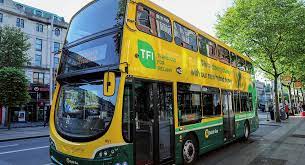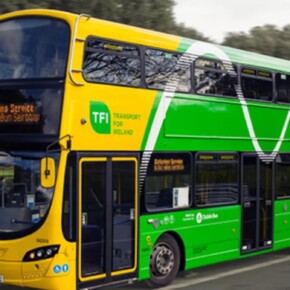BusConnects having negative impact on commuters, says Smith
Mike Finnerty 20 Dec 2023
People Before Profit-Solidarity TD Bríd Smith told the Dáil that the BusConnects system is having a negative impact on passengers and communities on the Southside.
Smith said that latest phase of BusConnects in her constituency of Dublin South-Central, which spans Dublin 10 and Dublin 12, the old 17 and 18 bus routes have been scrapped.
The routes have been replaced with the S2 and the S4 and a new route 74.
“Like many other phases in the BusConnects plan, these routes are not exactly the same and people accept this. The claim made by the National Transport Authority and BusConnects, however, that these new routes will give people better and wider access to more locations and more frequency really must be challenged.”
“Some people will now have to transfer to a second or, sometimes, a third bus to make a journey they used to make on one bus, for example, to get from Ballyfermot to St. Louis High School in Rathmines.”
Smith noted that the same issue arises with people who are going from parts of Crumlin to Sandymount or a job near Ballsbridge, and that people now have to make two or three connections.
“This would be fine if the theory that these buses would be more efficient and plentiful and the transfers would be easy, smooth and timely worked but this is not true. I wish it were true but it is not.”
Smith stated “this is not just a teething problem that can be ironed out; large numbers of people are being stranded and are facing longer delays and longer commutes.”
“Some parents are writing to me in particular about St. Louis in Rathmines because the children have to try to get two buses or a combination of three buses. Whatever journeys they take, the times they have to travel have been dramatically increased under this new routing.”
Smyth, who was taking the question on behalf of Minister for Transport Éamon Ryan, said “the statutory responsibility for securing the provision of public passenger transport services nationally rests with the National Transport Authority,” and was not something Ryan could control.
“I reassure Deputy Smith that the Department of Transport, the NTA, and the operators are working to ensure the optimised deployment of resources across the public transport network to match changing passenger demand patterns.”
The NTA have stated in recent weeks that they are in the process of updating bus public transport routes nationwide in accordance with Census figures, and optimising or adding routes based on population changes.
While Smith acknowledged the work done by Government on public transport, she said “the problem we have is that all of this sounds great on paper.”
“The data may show things are improving and capacity is improving. I know, for example, the late-night buses are a big attraction and capacity on them has improved and people are taking them up. Some of the routes are definitely better. However we are still dealing with a lot of traffic congestion in the city.”
She said that buses get caught up in traffic, and the BusConnects project has not improved access to bus lanes.
“It is like having trains without the train tracks; we have all these trains but no tracks to put them on.”
“At present for many people it is a pure disaster, particularly for people doing regular journeys to school or to work or to access the village where they can shop or socialise.”











